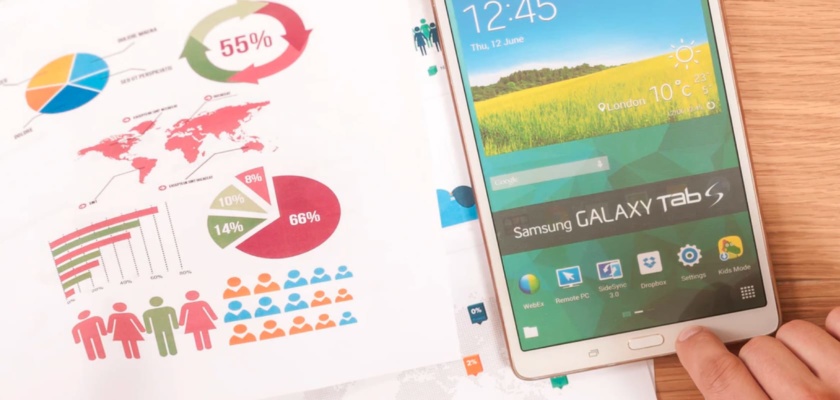How to Level Up Your Cross-Channel Marketing with Data Insights

The marketing funnel has never been more complex than it is today. Modern consumers interact with brands across a number of different platforms and channels at every stage of the customer journey. Being able to provide relevant content to your customers in their preferred channel is the key to nailing the cross-channel experience.
Cross-channel campaigns help provide customers with personalized messaging that boosts engagement with your company as well. And that increased engagement builds trust and loyalty in your brand and your product. Customers will see that you understand their preferences and want to connect with them at the right times.
Customer data helps you build these targeted campaigns that appeal to specific customers. But managing these cross-channel experiences will often involve a third-party tool, which increases the potential for privacy issues. And this can have a negative impact on your relationship with the customer. Leveraging customer data insights helps you maintain trust and create cross-channel campaigns that showcase the value your product provides.
Build More Robust and Actionable Customer Profiles
Use customer data to build profiles that paint a vivid picture of your audience, from their channel preferences. Gaining this understanding helps you create cross-channel campaigns and messaging that resonates with their needs and interests while also building trust in your brand.
There are a number of data points you can use to build robust, well-rounded customer profiles, including:
- Past communication: Track the communication methods each customer profile uses most frequently, so you know the best platforms to reach them on with cross-channel campaigns.
- Demographics: Know your customers: their name, geographic location, occupation, email address, and mobile device type. All this helps you paint a picture of who you’re actually targeting.
- Purchase history: Know what types of products they buy, when they did so, and how long they’ve been a customer. Then take a look at the kind of product-focused content they’ve shown an interest in since.
- Account behavior: Track account usage related to login frequency, engagement rates, and most-used features.
Each of these points provides valuable context for your marketing team; they can then use this data to create rich customer profiles or user personas.
Example customer profile via Sellbrite
Recognizing patterns in your customers based on data insights provides the context you need to craft engaging and cohesive cross-channel campaigns. This context also helps you create targeted experiments to refine your messaging.
Just keep in mind that you should always build these profiles with security in mind. Understanding data privacy regulations like GDPR and CCPA helps you keep customers’ data safe and shows them that you care about their privacy. That builds trust in your brand, which you can use to foster the stronger relationships that lead to long-term retention.
Target Customers Based on Channel Preference
People interact with your company in a number of different ways, from mobile apps and your website to email and over-the-top (OTT) streaming platforms. Capturing secure and relevant data provides the insights you need to understand which channels work best for each customer. Determine, for example, which customers respond better to push notifications than email messages or which customers prefer pop-ups on your site. That knowledge can be translated into marketing campaigns that boost engagement across every channel.
Sixty-nine percent of customers already expect this kind of consistent experience from companies. So it’s important to consider how you can use data insights to build more cohesive cross-channel campaigns.
Cross-channel customer expectations via Aalpha.
The data you collect helps increase visibility into customer behavior across each channel as well. This visibility gives you insight into how they prefer to interact on different channels. For example, you might learn that one customer responds faster to push notifications than email, or that another customer only uses the contact form in their account via the web. This not only makes it easier to communicate with each customer in their preferred channel, but the patterns that emerge will give you valuable context for creating more engaging campaigns across all channels.
When you’re able to parse which customers respond better to push notifications than email messages or which customers prefer pop-ups on your site, it helps you group these customers by preference and target them with relevant content at the exact right time. The method you use to communicate with a customer will impact how they respond to your message. For example:
- Customers who want to see up-to-date analytics on an A/B test prefer the immediacy of push notifications to email or in-app notifications.
- Customers who need to update their credit card information in an account prefer a more secure communication method, like an email that links them directly to a secure area of their account.
By understanding these preferences, you’re able to help customers accomplish their goals in their preferred channels. It removes friction from their experience, giving customers valuable information in a way that’s easy for them to engage with and understand.
With a single-tenant solution from Taplytics, you can pull these customer data insights while also minimizing the potential for privacy issues with third-party integrations. This makes every interaction with your marketing inherently more valuable and solidifies a customer relationship that’s built on trust.
Provide Personalized Cross-Channel Messaging
According to an Instapage, 79% of consumers are more likely to respond to your marketing content when it’s personalized based on past interactions. When you understand how to turn your secure data insights into robust and relevant customer profiles, it helps you craft personalized campaigns across every channel.
To increase engagement, use the insights you gain from customer data to build individualized, channel-targeted experiences. Whenever a customer takes action in their account or responds to a specific message, you can follow up directly in the channel that makes sense for their experience.
Personalized recommendations via Marketing Automation with Taplytics.
Whether it’s based on the customer’s past interactions, user profile, or their account usage, personalization can help you provide a better experience across the board. Building on the examples from the previous section, it’s easy to see how personalization increases engagement with your content.
Take the example data from the customer profiles section. When you understand as much as possible about your customers, it’s easier to send them engaging messages:
- Past communication: Say a customer reaches your business via the contact option in your mobile app. They’ll likely respond better to a push notification than someone who only contacts you via email.
- Demographics: If you know your customer lives in Québec, it makes sense to give them the option to receive or respond to messages in French.
- Purchase history: If your customer recently purchased a one-time data increase via their mobile device, you can turn around and target them with an email campaign about upgrading to a higher mobile data offer.
- Account behavior: Say you see that a customer never entered their address into the account profile. You can send them an email that links directly to their profile page and explains why you need the information.
Each of these examples is an opportunity to show the customer you’re in tune with their individual needs across different channels. In today’s competitive markets, taking the time to tailor your messaging strategy in this way helps you stand out.
When you send personalized cross-channel campaigns, just make sure you clearly state how and when you’re collecting this information. With Apple’s recent announcements at WWDC 2020 about customer data transparency and how it’s used, it’s important now than ever. Whether you’re linking to your privacy page for clarity or addressing the customer’s security directly in your message, context is important. A hyper-personalized message without proper context can be a negative customer experience.
Build Targeted Cross-Channel Campaigns with Data Insights
When you use data to make decisions, you’re able to create campaigns that are tied to customers’ preferences. Combine this with the ability to create actionable customer profiles and send personalized messages across every channel, and you’re creating an experience that builds trust and loyalty in your brand. That kind of individualized treatment is the core of long-term customer retention.
When you retain customers longer, provide them with contextual cross-channel campaigns, and send personalized messages, it can make a positive impact on both your revenue and the customer relationship.



